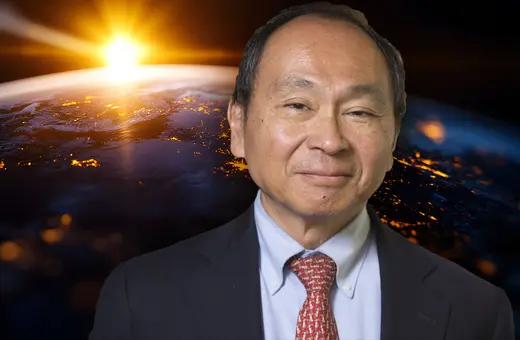Two decades after the fall of the USSR, there is a new Eastern, Communist challenge to American world dominance. The parallels are obvious but China is not the USSR and Washington cannot revert to Cold War thinking. Proxy wars and military threats will not work with China, especially now America is no longer at the top, writes Sourbah Gupta.
 SUGGESTED READING
Huawei and the Great Decoupling
By Nigel Inkster
75 years ago, a young American diplomat in Moscow by the name of George Kennan dispatched a 5,300-word telegram to his superiors in which he set out practical suggestions for future U.S. policy towards the Soviet Union. The telegram contained his deduction of the philosophical and conceptual drivers of the post-War Stalinist worldview. It instantly struck a chord in Washington as the administration grappled to come to terms with the Soviet Union’s intransigent ways in the aftermath of World War II.
SUGGESTED READING
Huawei and the Great Decoupling
By Nigel Inkster
75 years ago, a young American diplomat in Moscow by the name of George Kennan dispatched a 5,300-word telegram to his superiors in which he set out practical suggestions for future U.S. policy towards the Soviet Union. The telegram contained his deduction of the philosophical and conceptual drivers of the post-War Stalinist worldview. It instantly struck a chord in Washington as the administration grappled to come to terms with the Soviet Union’s intransigent ways in the aftermath of World War II.
The Long Telegram, as it came to be famously known, was succinct and hard-hitting. The Stalinist dictatorship, in Kennan’s view, was only the latest in a “long succession of cruel and wasteful Russian rulers who ha[d] relentlessly forced [their] country on to ever newer heights of military power in order to guarantee external security of their internally weak regimes”. With such an insecurity-ridden regime that was determined to engage in a “patient and deadly [zero sum] struggle for total destruction of a rival power” to mask its internal weaknesses, good relations were impossible. Rather, America needed to remain self-confident and true to its values, relate to Moscow without fear or favor, and offer a constructive vision of an alternative world that people would prefer to live and prosper within.
The word ‘containment’ would enter the lexicon later in Kennan’s 1947 essay, The Sources of Soviet Conduct. In it, Kennan advised his countrymen to implement a long-term policy that was designed to confront “Russian expansive tendencies … with unalterable counter-force at every point where they show signs of encroaching upon the interests of a peaceful and stable world”. The Kremlin was uniquely attentive, Kennan argued, to the underlying cost-benefit equation of its revolutionary adventures overseas. Boxed within its limited geographic sphere of influence, the innate deficiencies of the Soviet polity would in time weaken its own national potential and cripple the governing regime.[2]
Is there any equivalence however between the Stalinist Soviet Union’s conduct and Socialist China’s today?
Kennan did not intend the essay to be a comprehensive statement of national strategy but it quickly became one. Its brevity, insight and rigor were irresistible and ‘containment’ effectively became the geopolitical doctrine of the Cold War age.
Against the backdrop of the meteoric geopolitical rise of China and the significant deterioration of U.S.-China ties, many commentators have tried to write the Chinese equivalent of The Long Telegram. The most notable of these attempts is a 72-page document, The Elements of the China Challenge (with a key chapter titled The Intellectual Sources of China’s Conduct[3]), authored by the Trump administration’s State Department in November 2020.





















Join the conversation